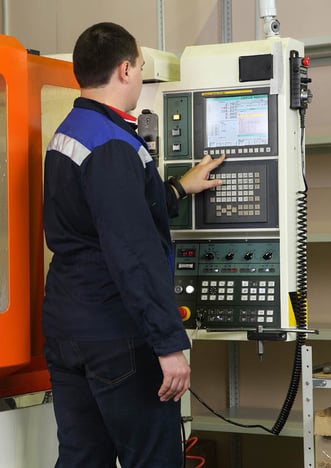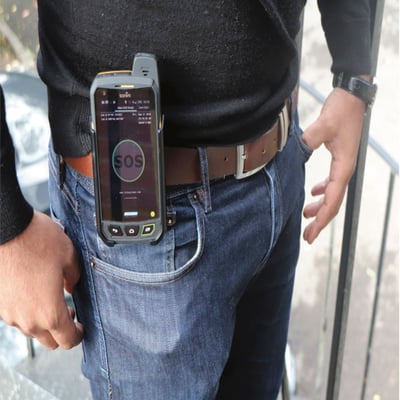
In times of emergency within your business, every second is crucial. Delays in identifying the issue or mobilising your response team can have dire consequences – a matter of life or death.
Implementing effective critical alarm management allows you to establish reliable and robust automated procedures. This puts you in a much better position to handle critical incidents, ensuring that you can:
Explore the links below to gain comprehensive knowledge on the subject and discover how to automate specific components within your response process.
Every organization has its own unique perspective on what qualifies as critical, which can vary from one business to another. A critical alarm indicates an urgent situation or event that requires immediate attention. Neglecting to promptly address these alarms can result in serious consequences, including fines, additional expenses, and, unfortunately, even the preventable loss of an employee's life. In the manufacturing industry, various critical alarms may arise, and below are a few examples:
Issues with machines, valves, or pumps can cause significant problems, including:
-Downtime in production while the issue is being fixed
-Unnecessary waste when the issue is not resolved in time and the production batch is spoiled
-Product defects that require redoing the entire product cycle, wasting valuable time and resources
Failing to effectively manage critical alarms can have severe consequences. An example frequently mentioned is the Milford Haven oil refinery disaster of 1994, where staff were overwhelmed with numerous alarms for many hours before the actual event occurred.
In more recent times, major companies such as South West Water, Tesco, Thames Water, and Yorkshire Water have faced substantial fines (ranging from £8m to £12m) due to serious incidents caused by inadequate alarm management and poor processes. These failures hindered their ability to respond appropriately to emergencies.
Tragically, one incident resulted in a fatality for South West Water. A lone worker conducting routine maintenance was found dead after it took the company 90 minutes to respond to the alert.

Before delving into the automation of critical alarm management systems and how to implement them, it is essential to understand their distinctions from other alarm management solutions.
Different companies manage alarms in various ways. For instance, a small business may have a few simple alarms that trigger a siren in the production area, while a large manufacturing company might have a centralized control room and an alarm management system that monitors multiple systems throughout the production process.
Most alarm management systems rely on manual escalation of incidents by operators, which exposes the company to the risk of human error. Control centers can be incredibly busy, with operators in oil, gas, and chemicals industries receiving up to 1,500 alerts per day. This makes it challenging for operators to differentiate critical alarms from routine ones, especially when they are already overwhelmed with alarm messages and lack technical expertise or site knowledge to fully comprehend the implications of each issue. Identifying and prioritizing these alarms at a glance and manually initiating emergency procedures by contacting the appropriate response team can significantly delay the process and prolong response times. Such delays can have detrimental effects on production, finances, or even the safety of lone workers who trigger alarms. In the worst-case scenario, a factory or plant could face complete destruction.
Implementing Critical Alarm Management systems can benefit almost any company, but they are particularly valuable in industries where lone workers operate or businesses that rely on continuous operation of systems and equipment.
These systems are designed to efficiently manage critical alarms through automation. Here's how they can help:
With these systems in place, you can streamline your alarm management and free up your staff's time for more important tasks.
All of these benefits lead to faster and more efficient alarm responses, providing you with:
Read more about automating critical alarms here
Equipping staff with the right communication handsets
For many frontline workers, receiving up-to-date critical alarm information directly on their mobile devices isn't just a luxury; it's a necessity. However, companies need to go beyond alarm information and consider what happens next. How do staff members handle emergencies? Who do they need to contact or involve to resolve matters quickly? It's essential to question whether frontline workers have the right handsets to perform their jobs effectively and make the right decisions every time.
Businesses can enjoy the benefits of automated technology without the need to replace their end user devices. In most cases, crucial alerts can be conveniently received on a variety of devices, such as DECT Radio and Smartphones, as long as these devices have a screen. This not only saves businesses a significant amount of money but is especially advantageous for those that have recently upgraded their employees' mobile handsets.
However, it is important to note that certain handsets can enhance team efficiency depending on factors such as the worker's role, the operating environment, mobile reception quality, and existing infrastructure. Smartphones, for example, may not be practical for teams that wear gloves, and most models are not as durable or suitable for industrial areas compared to Radio handsets. While critical alarm apps are available for iPhones, they often lack the comprehensive features offered by Android smartphones.
Click here to read more about machine alarms to mobile devices >

Flammable gas, mist, vapours, or combustible dusts can be present in ATEX zones, posing a risk of explosion. Employees working in these areas are essentially "lone workers" without the support of nearby colleagues. To prioritise the health and well-being of your lone working employees, it is crucial to establish robust and reliable processes that automatically alert teams and enable them to respond promptly to any incidents.
Similarly, a response team operating within an ATEX environment on-site should always carry intrinsically safe devices. This ensures their safety and ability to respond effectively to major incidents. By having the right equipment on hand, they can prevent being at risk or unable to respond promptly.
Read more about critical alarm management in ATEX zones here >
Standard mobile phones and other communication devices can emit sparks, which can be dangerous in ATEX areas that may contain high levels of gas or dust. As a result, these devices must be left outside the area for safety reasons. Additionally, ATEX zones often have restrictions, meaning that individuals working in these areas may be alone. This poses a significant risk as someone who becomes immobile due to an incident would be unable to call for help without their mobile communication device.
Fortunately, there are ATEX-certified devices available that are safe to use in ATEX zones with flammable gases or dust. This allows staff to confidently use their ATEX communication handsets throughout the entire site. Moreover, these handsets are equipped with lone worker functionality, including a panic button and embedded tilt sensor. In the event of an accident, these features help the user activate an alert informing colleagues on PC, Laptop or Smartphone. Colleagues can then respond accordingly, ensuring that the lone worker receives prompt and appropriate assistance without any delays. In such critical situations, it is essential to promptly acknowledge all alarms, which can be done directly on the handset, to prevent the incident from escalating and to ensure that help always arrives quickly for the worker in need.